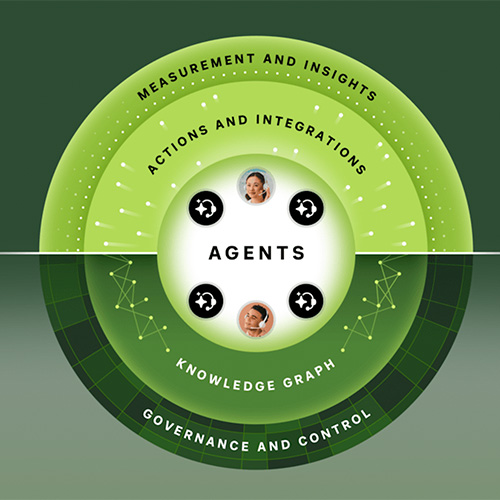
Voice bots, or voice-based chatbots are being used extensively today as a means to improve customer experience and service. Mostly used in contact centres to interact with inbound callers, these conversational bots can understand human language and intentions, thereby improving the ability to handle dynamic interactions too by providing personalized experience.
Sarvagya Mishra, Co-founder & Director Superbot dives down deeper to explain how voice bots work and how they can be used by businesses to elevate customer experience -
How important is it becoming to integrate voice bots to improve customer experience? How will it benefit a business in the long run?
As businesses strive to meet the growing customers’ expectations of quick, efficient, and personalized services, it has never been more vital to integrate voice bots into customer service. Voice bots, powered by advanced AI and natural language processing (NLP), enable real-time, life-like conversations that can handle a vast number of queries simultaneously, ensuring zero wait times. This not only enhances the customer experience by providing 24x7 support but also significantly reduces operational costs by automating routine tasks. In the long run, businesses benefit from improved customer satisfaction, retention, and loyalty, as well as the ability to scale operations without proportionately increasing costs.
What factors should a business consider, besides cost, before deploying a voice bot?
Besides cost, businesses must consider several other factors while deploying a voice bot. To begin with, deploying voice bots can significantly escalate customer experience. The bot’s ability to handle complex queries, discern different languages and accents, and engage in a natural, human-like conversation is crucial. Furthermore, the Voice Bot should come with advanced integration capabilities, making it seamless to integrate with existing CRM systems, databases, and other communication tools to provide a unified customer service experience.
Security and Compliance is another significant aspect; ensuring the bot adheres to industry-specific regulations and data privacy laws is vital, especially in sectors like healthcare and finance. As the business grows, the scalability of the Voice Bot becomes another significant factor to consider. The bot must be robust enough to cater to a growing volume of interactions, seamlessly. Lastly, the bot should offer easy customization and flexibility, with the ability to cater to specific industry needs and unique business processes.
Instead of looking at voice bots as the only tool for handling customer queries & interactions, can they be assimilated with other tools for an integrated approach to customer service?
Voice bots should not be viewed as the sole tool for customer interactions but rather as part of a broader, integrated customer service strategy. By combining voice bots with other technologies such as chatbots, email automation, and human agents, businesses can offer a more comprehensive and seamless customer experience. For instance, while voice bots handle routine queries or high-volume interactions, human agents can focus on more complex or sensitive issues. This integrated approach ensures that customers receive the right level of support at the right time, enhancing overall satisfaction and efficiency.
What further technological advancements can be seen taking place in voice bots and how will this eventually revolutionize customer experience?
The future of voice bots lies in advancements like emotionally intelligent AI, which can understand and respond to customer emotions, creating more empathetic interactions. Other expected innovations include improved sentiment analysis, multi-language and dialect support, and deeper integration with AI-driven analytics for real-time insights. These advancements will enable voice bots to offer more personalized and context-aware interactions, transforming customer service into a proactive and highly engaging experience. As these technologies evolve, voice bots will increasingly become essential tools for businesses looking to differentiate themselves through superior customer service.
Can there be latency issues faced with voice bots? How can this be addressed?
Latency can be a concern with voice bots, particularly in scenarios requiring real-time processing of complex queries. This issue can be addressed through several strategies like having an optimized infrastructure utilising high-performance servers and optimizing the bot’s backend infrastructure to reduce processing time. Edge computing that processes that data closer to the sources (i.e. on the edge) can also minimize latency. Implementing more efficient algorithms that can process natural language inputs faster and distributing the processing load across multiple servers to ensure smooth operations even during peak usage is time are some of the many ways to address latency issues faced by voice bots.
Which are some of the industries where voice bot applications can be found?
Voice bots have broad applications across various industries. For instance, in education, Voice Bots can offer 24x7 admission helplines, lead verification, and student support, allowing counsellors to focus on more imperative and nuanced customer queries. In e-commerce, Voice Bots can take care of end-to-end processes from order confirmations to cart abandonment reminders and customer support. In Healthcare, Voice Bots can assist with appointment scheduling, patient inquiries, and helplines. In Finance, this technology can assist with payment reminders, fraud detection, and customer services. The retail sector can deploy voice bots to offer personalized shopping assistance and post-purchase support. In telecommunications, voice bots can look after automated technical support and billing inquiries.
How are voice bots different from conversational AI?
Voice bots are specialized systems designed primarily for voice-based interactions, focusing on executing specific tasks or answering questions using predefined commands. In contrast, conversational AI is a broader and more advanced technology that handles both voice and text-based interactions, leveraging natural language processing (NLP) to understand context, interpret complex user intents, and adapt to conversations dynamically. While voice bots are limited to straightforward, rule-based responses, conversational AI offers a more flexible and intelligent approach, capable of managing nuanced and context-aware dialogues across multiple channels.
See What’s Next in Tech With the Fast Forward Newsletter
Tweets From @varindiamag
Nothing to see here - yet
When they Tweet, their Tweets will show up here.





























